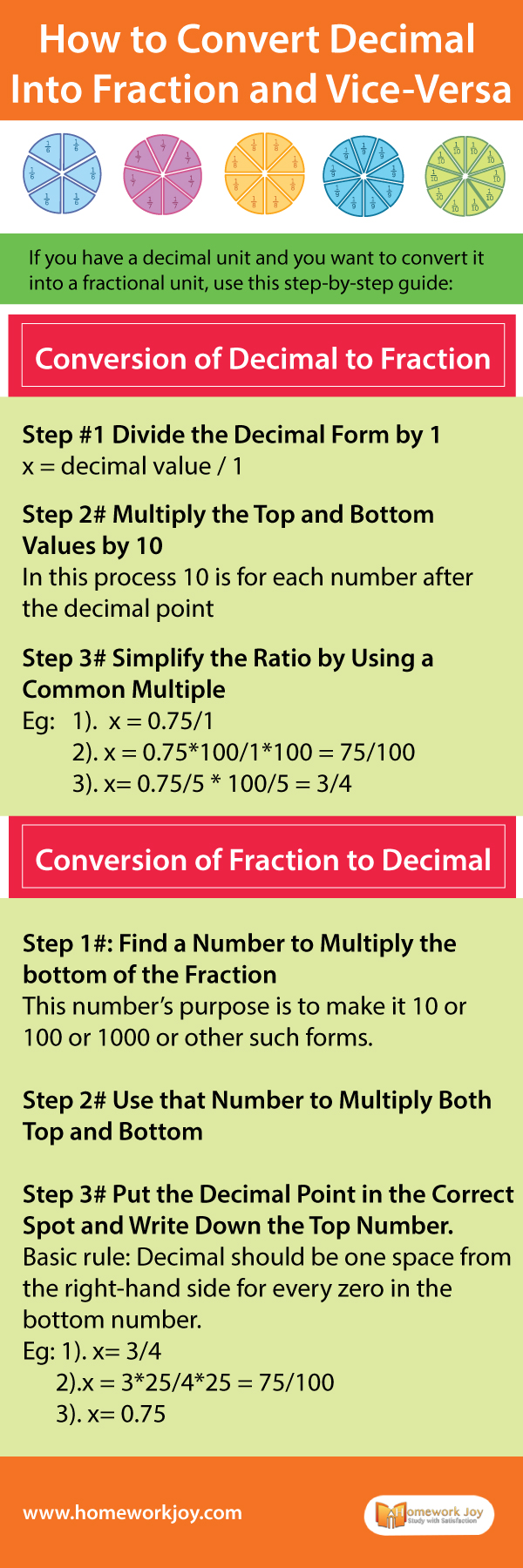To know how to convert decimal into a fraction, there are two main things to understand well. The first is that all decimal numbers can be expressed as a fraction, and second is it’s vice-versa. So, if you know the main steps of the conversion well, you can get the final result easily. Before getting any further, first, let’s understand the two.
What is a Decimal and Fraction Number?
A decimal number represents a non-whole number where several digits of a value smaller than one follow a decimal point. On the other hand, a fraction number represents a part of a whole number. It is a ratio between the upper number and the lower number. Both are the types of numbers use to represent a non-whole number.
If you have a decimal unit and you want to convert it into a fractional unit or vice-versa, you can use this step-by-step guide:
Conversion of Decimal to Fraction
Step #1 Divide the Decimal Form by 1
x = decimal value / 1
Step 2# Multiply the Top and Bottom Values by 10
In this process, ten is for each number after the decimal point.
Step 3# Simplify the Ratio by Using a Common Multiple
Eg: 1). x = 0.75/1
2). x = 0.75*100/1*100 = 75/100
3). x= 0.75/5 * 100/5 = 3/4
Conversion of Fraction to Decimal
Step 1#: Find a Number to Multiply the bottom of the Fraction
This number’s purpose is to make it 10 or 100 or 1000 or other such forms.
Step 2# Use that Number to Multiply Both Top and Bottom
Step 3# Put the Decimal Point in the Correct Spot and Write Down the Top Number
Basic rule: Decimal should be one space from the right-hand side for every zero in the bottom number.
Eg: 1). x= 3/4
2).x = 3*25/4*25 = 75/100
3). x= 0.75
If you need more help related to similar topics, take instant math homework help from our professors.
